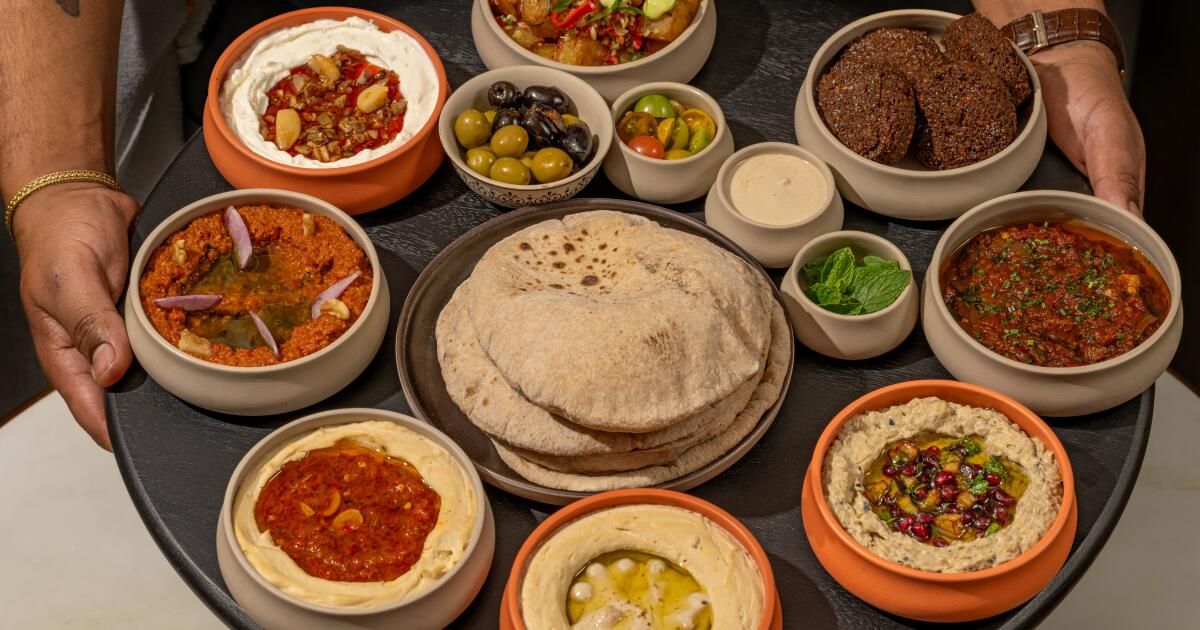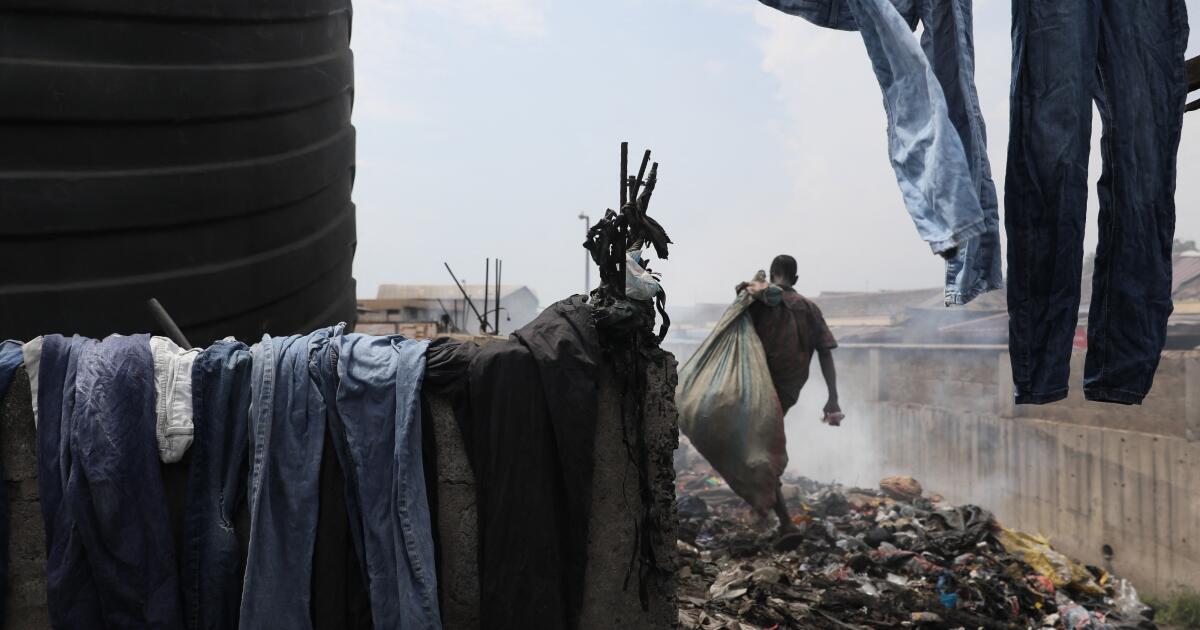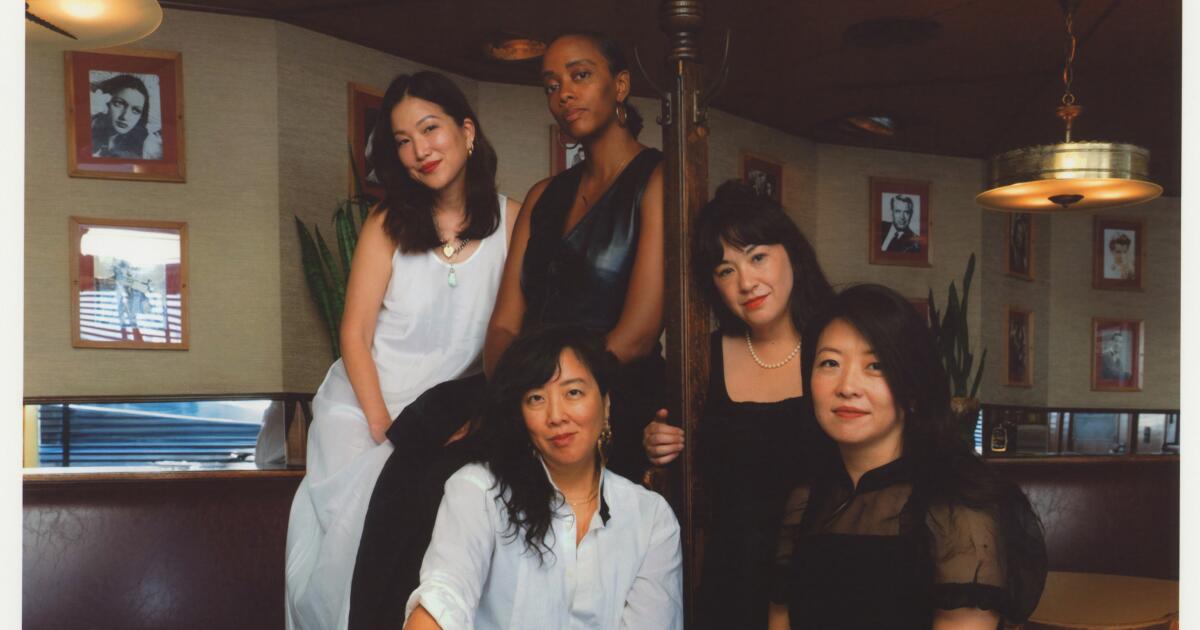The mezze plates at Ladyhawk in West Hollywood are a load for the staff, a look for customers, and the quickest, most festive introduction to the restaurant's elegant Lebanese cuisine.
Waiters lift table-sized black lacquered trays from the open kitchen counter and toss them across the dining room to their destinations. There is usually a moment of uncertainty when they arrive, as diners scramble to push aside glasses and cutlery to make room. Viewed from above, the collection of bowls and molds and their contents resembles an earth-toned Kandinsky: circles within circles, overlapping patterns.
The numerous plates for a mezze order at Ladyhawk are placed on rotating plates before waiters bring them to diners.
(Ron De Angelis / For The Times)
The platter rotates in the style of a record player. Perhaps the sauces arrive in front of you first: hummus in two variations, one with a little olive oil and mostly whole, completely soft chickpeas and the other with sambal chili; baba ghanouj, garnished with charred and diced eggplant and pomegranate seeds; muhammara, reddish with roasted red pepper and walnuts; and labneh, whose creaminess is offset by chopped makdous (pickled eggplant). Each one has been swirled in its bowl, appearing as if it were in spinning motion. They make me want to eat them faster.
The dip bread at most Los Angeles restaurants comes in one of two forms: flat, packaged, perhaps reheated but still almost as appealing as cardboard, or as fresh-out-of-the-oven spheres that arrive so hot they're smoking. and they deflate when broken. in them. Luckily, this kitchen team bakes their own rounds of pita (also known as khubz in transliterated Arabic).
Flip the tray over for more crunchy bites and snacks. The falafel is dark like the fertile earth on the outside, spring green with herbs on the inside; The tahini sauce is waiting nearby for dipping. The potato chip cubes radiate a garlicky spiciness. Be sure to grab some salty, buttery olives before they walk away.
The dish, which costs $110, essentially consolidates all of the a la carte options into the mezze section of the restaurant's menu. Presumably the feast is designed for groups to start their meal, but I've seen couples split it as dinner, with plenty of leftovers for lunch the next day.
It's a viable strategy, although it means missing out on other salads, larger appetizers and a handful of entrees that make 3-month-old Ladyhawk the hottest Lebanese restaurant in Los Angeles right now.
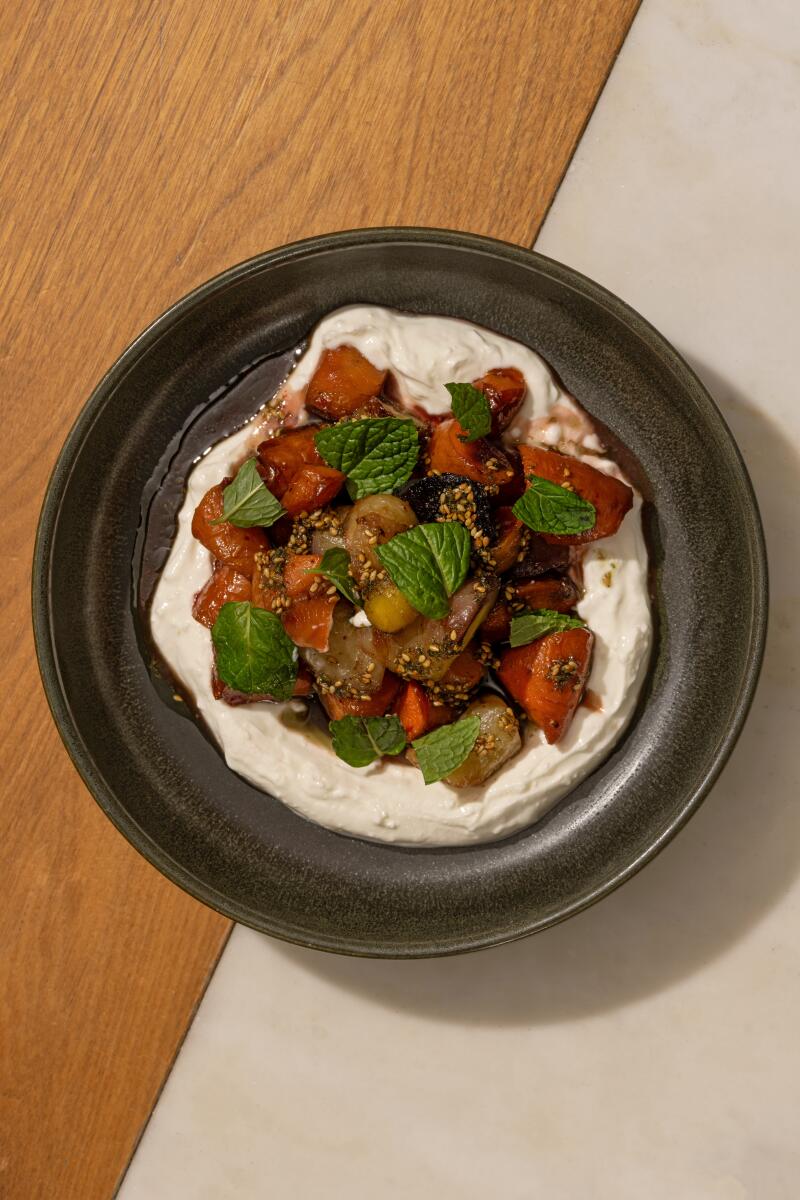
Roasted Ladyhawk carrots on a bed of creamy labneh. (Ron De Angelis / For The Times)
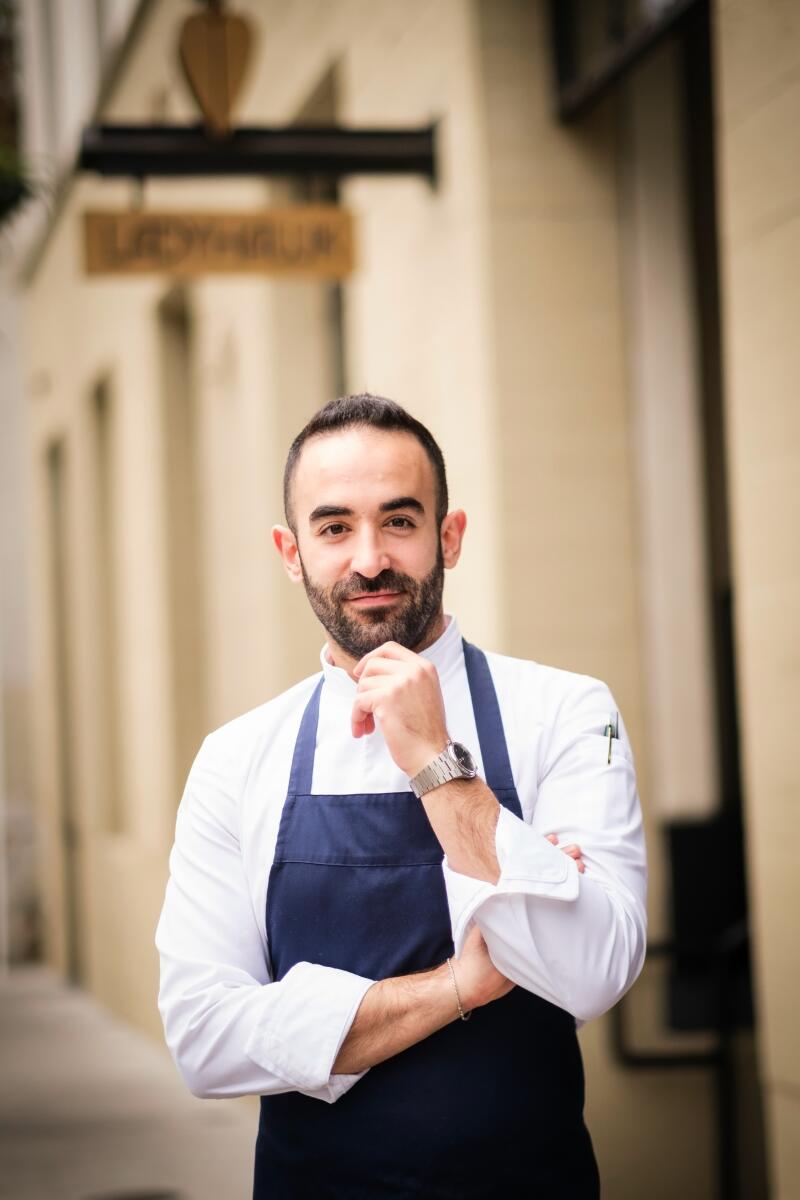
Chef Charbel Hayek, winner of “Top Chef Middle East” and the youngest chef to compete on “Top Chef: All-Stars.” (Steve Legato)
Charbel Hayek is the 26-year-old chef who forges a remarkably controlled style between tradition and imagination in his approach to cooking. Born in Beirut and raised by a mother who is also a chef, Hayek found a big professional moment in 2022 when he won the fifth season of “Top Chef Middle East” and was the youngest chef to compete on the 2023 season of “Top Chef ”. : All stars “Prior to his victory, he had spent a few years as a cook working for Josiah Citrin in Mélisse.
His return to Los Angeles marks his first time as a chef and partner in a business. Ladyhawk is on the ground floor of the Kimpton La Peer hotel and of course the location gave me pause for thought for the first time. Hotel restaurants are case-by-case scenarios. Too many of them hire local or national culinary celebrities as consultants who shine their brilliance on a promising launch, only to have the shine fade when they turn their attention to other projects.
The owners of La Peer include developers and siblings Carol Braidi, Demitri Samaha and Elie Samaha, who grew up in Lebanon. They made a smart choice to frame Lebanese cuisine in a more refined gastronomic context than had previously existed in the city and, as demonstrated in these early days, to bring in Hayek to run the kitchen.
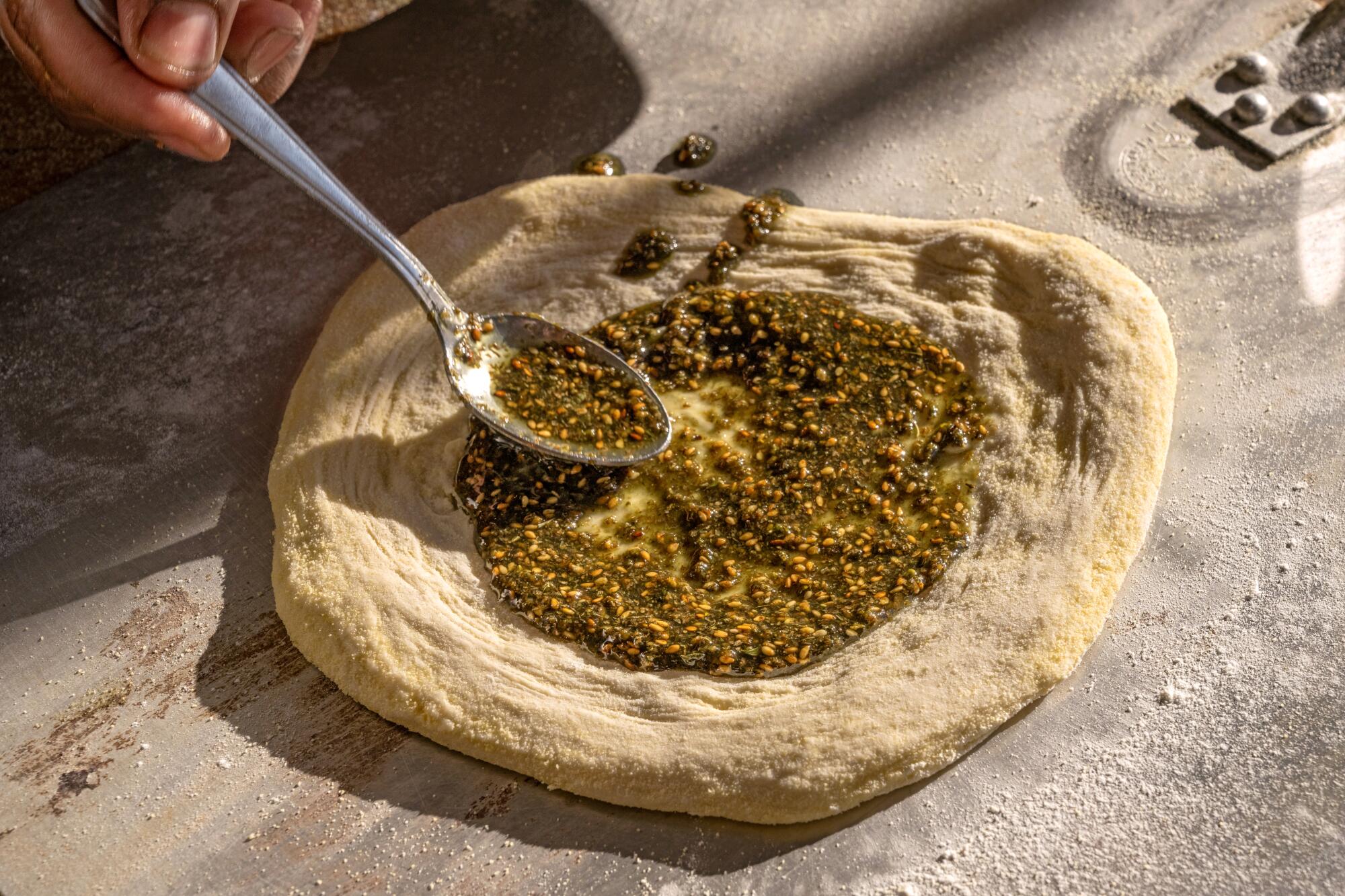
Chef de cuisine Jordan Olivo here prepares za'atar man'oushe, a flatbread often sold on the street and eaten for breakfast on the go. It could also be decorated with dots of labneh and tomato and herb purees, a nod to the colors of the Lebanese flag.
(Ron De Angelis / For The Times)

The menu of chef Charbel Hayek, born in Beirut and raised by a mother who is also a chef, reflects his style, halfway between tradition and imagination.
(Ron De Angelis / For The Times)
Their best dishes use creative decorations with subtlety and respect for the origin of the food. Hummus, finely calibrated in its balance of tahini, lemon, and garlic, is a thing of beauty, period. The same goes for their version of fattoush. Their variation (butter lettuce instead of the usual romaine lettuce, really ripe tomato, a judicious amount of crusty bread, just the right touch of pomegranate molasses in the dressing) shows thoughtful restraint. Traditionalists would object to his decision to substitute quinoa for bulgur in tabbouleh; I care more that the parsley is finely chopped so that the salad does not turn into a watery mush and that the presence of the grain is a grace note.
Za'atar man'oushe, a flatbread often sold on the street and eaten as breakfast on the go, is sold only as waiters carry it around the dining room. Hayek's vision is to decorate the surface with pretty dots of labneh and tomato and herb purees, a nod to the colors of the Lebanese flag. Once again, the additions signal a creative flex without diminishing the peppery, mulchy flavor of the za'atar or the peppery warmth of the bread.
Roasted chicken is a smart main dish. Plus a nice bunch of little lettuces, whipped toum (garlic sauce), and little pickles flank the bird. These are the classic flavors of a Lebanese chicken shawarma, deconstructed here for universal appeal (an implicit directive in a hotel restaurant) while still shouting country of origin.
Hayek pulls the same trick with skirt steak: Shawarma lahme (the word loosely means “meat”) traditionally comes with tarator, a lime-green tahini sauce with puréed parsley, tomato, and pickles.
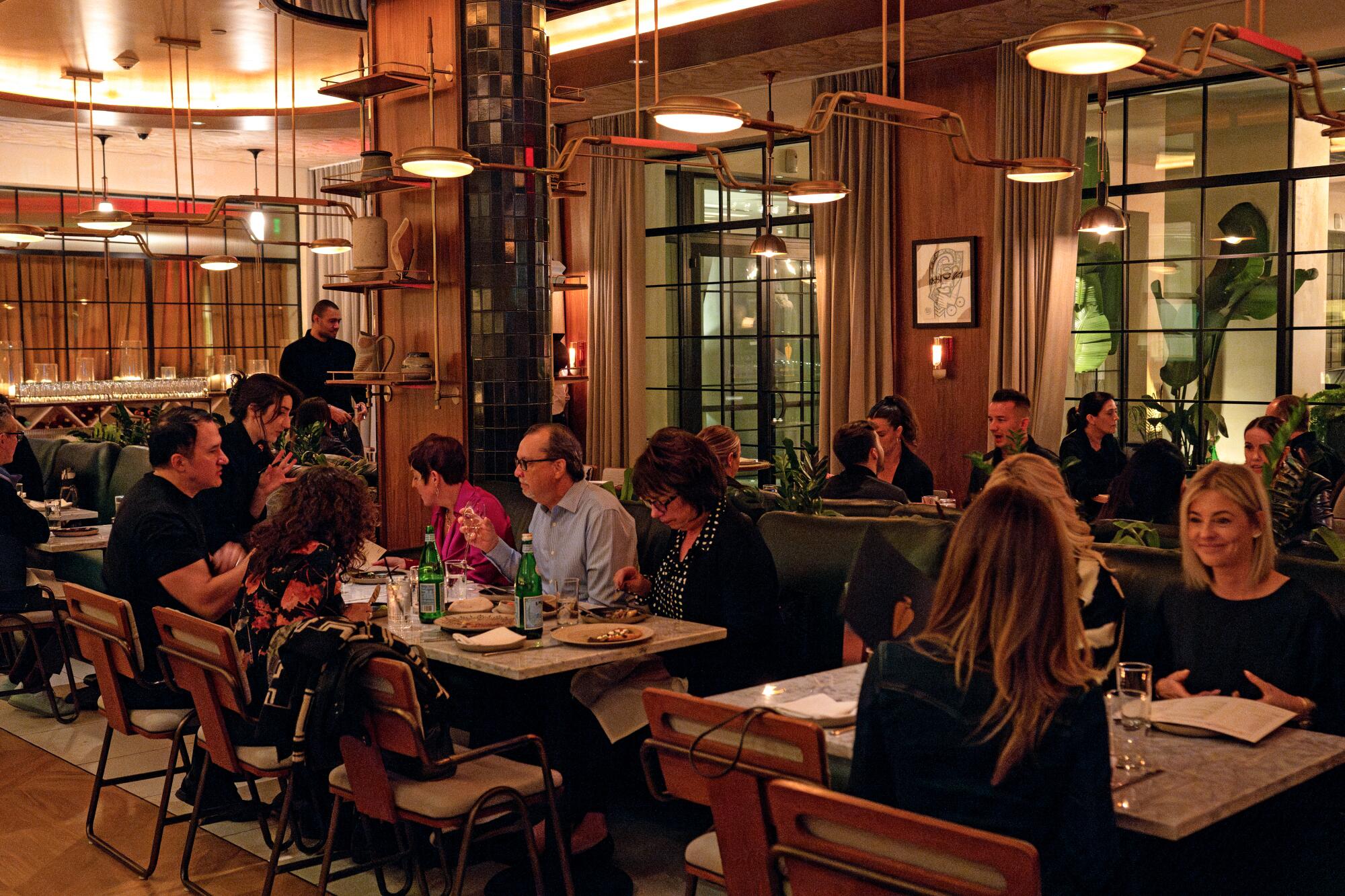
Ladyhawk is located in the La Peer hotel, whose owners include developers who grew up in Lebanon. They intelligently opted to frame Lebanese cuisine in a more elegant gastronomic context than had previously existed in the city.
(Ron De Angelis / For The Times)

Hayek's skirt steak: shawarma lahme (the word loosely means “meat”) traditionally comes with tarator, a lime-green tahini sauce with parsley puree, tomato and pickles.
(Ron De Angelis / For The Times)
With any of the shawarma riffs, I order a side of thin, constantly hot French fries.
A delicious grilled sea bream deviates from the strict lexicon with its garnish of zhoug, the Yemeni green spicy sauce that has become popular throughout the Middle East.
I'm less convinced by the lamb chops with a crust of dehydrated olives. Miracles can happen with lamb in Lebanese cuisine; This is a subtlety that lands without a hit. For some reason, other dishes that look to him for inspiration are: grilled shrimp with chermoula sauce; Duck scented with honey and roses, a combination most often seen in desserts, has suffered from overcooking during recent meals.
I would love to see Hayek's successful efforts reflected in the restaurant's beverage program. Lebanon's wine history is ancient, with modern efforts on the rise in the last decade. The globally minded wine list should showcase some of the country's gems, including a bottle or two of reds from Chateau Musar, Lebanon's most justly famous winery. There's also only one good option for arak, the anise-flavored liquor that Lebanese drinkers drink alongside mezze, and a couple of more finely crafted options (Touma, Brun Reserve, Musar) could go a long way in convincing initiated into its pleasures.
But I admit that, as a passionate student of Lebanese food customs, I am slipping into specialized territories. Lebanon has one of the most ignored and understood cuisines in the world; Many of its most down-home dishes, fueled by the country's fertile Bekaa Valley, parallel California's growing seasons. Imagine a citrusy lamb stew with peas in the eastern Mediterranean spring; loubieh bil zeit, a summer comfort of Romano beans simmered with tomatoes until they are reduced to a garlicky sheen; sculptural stuffed zucchini and “wasteless” tortillas flavored with the pulp extracted from the pumpkin; and, when the weather cools, a soothing pumpkin sauce with cumin.
Maybe one day gems like these will find their way into our professional kitchens. For now, there's Ladyhawk, a big step forward in giving Lebanese food in Los Angeles a bit of glamor and, more importantly, a mother lode of elegant skill. I've noticed the dining room getting busier and busier since it opened in November. It is evident that an appetite is being generated.
ladybug
623 La Peer Drive (at the La Peer Kimpton Hotel), West Hollywood, (213) 296-3036, ladyhawkrestaurant.com
Prices: Mezze $9-$17, other salads and appetizers $17-$27, most main courses $40-$66, desserts $14
Details: Dinner from 6 to 10 pm from Tuesday to Sunday. Full bar. Valet and street parking.
Recommended dishes: Group mezze platter, hummus, sweet potato harra, fattoush, fried cauliflower, half a chicken with toum and pickles (and a side of fries) and mouhalabieh, a fragrant and extremely comforting Lebanese milk pudding.

